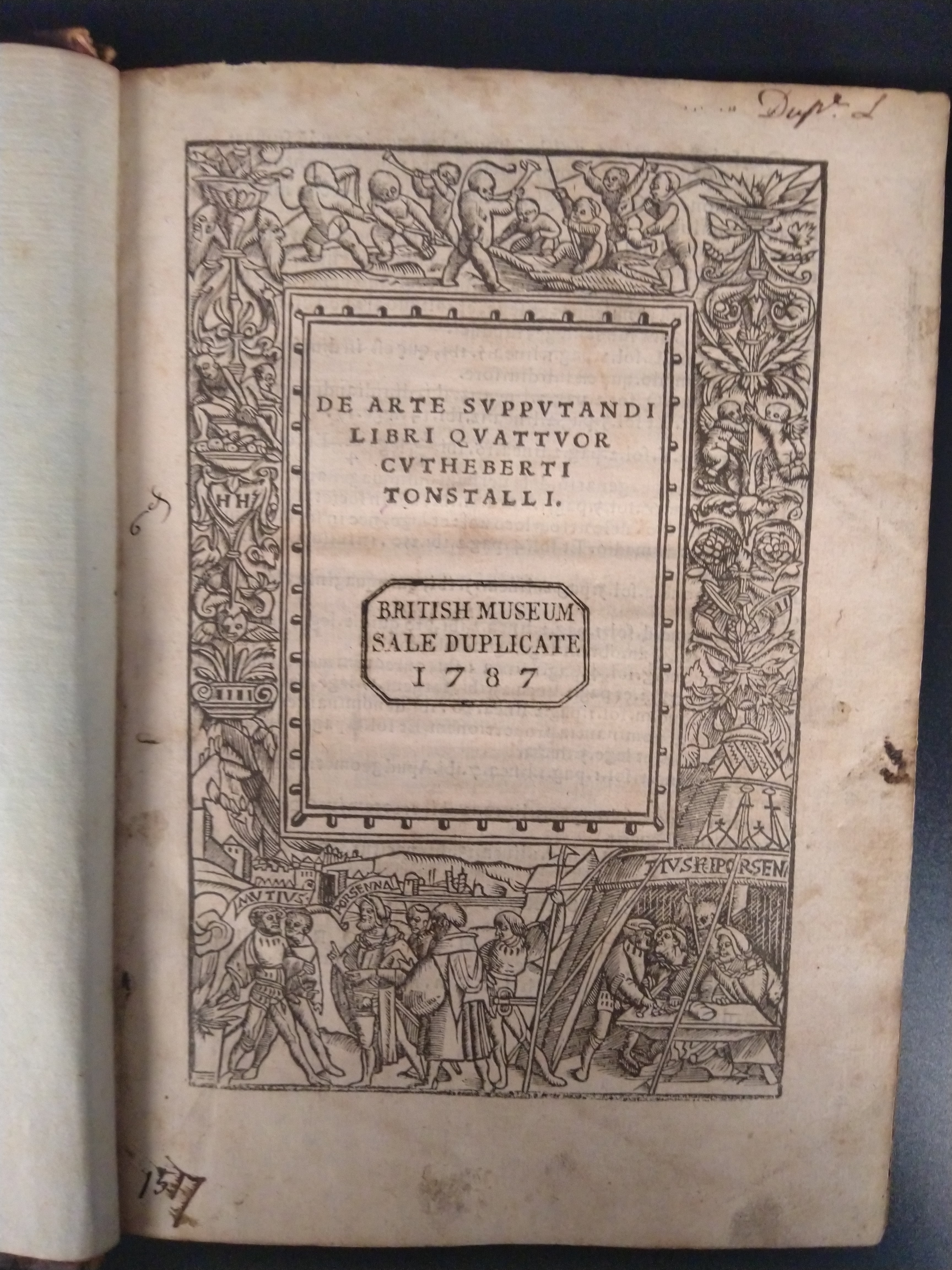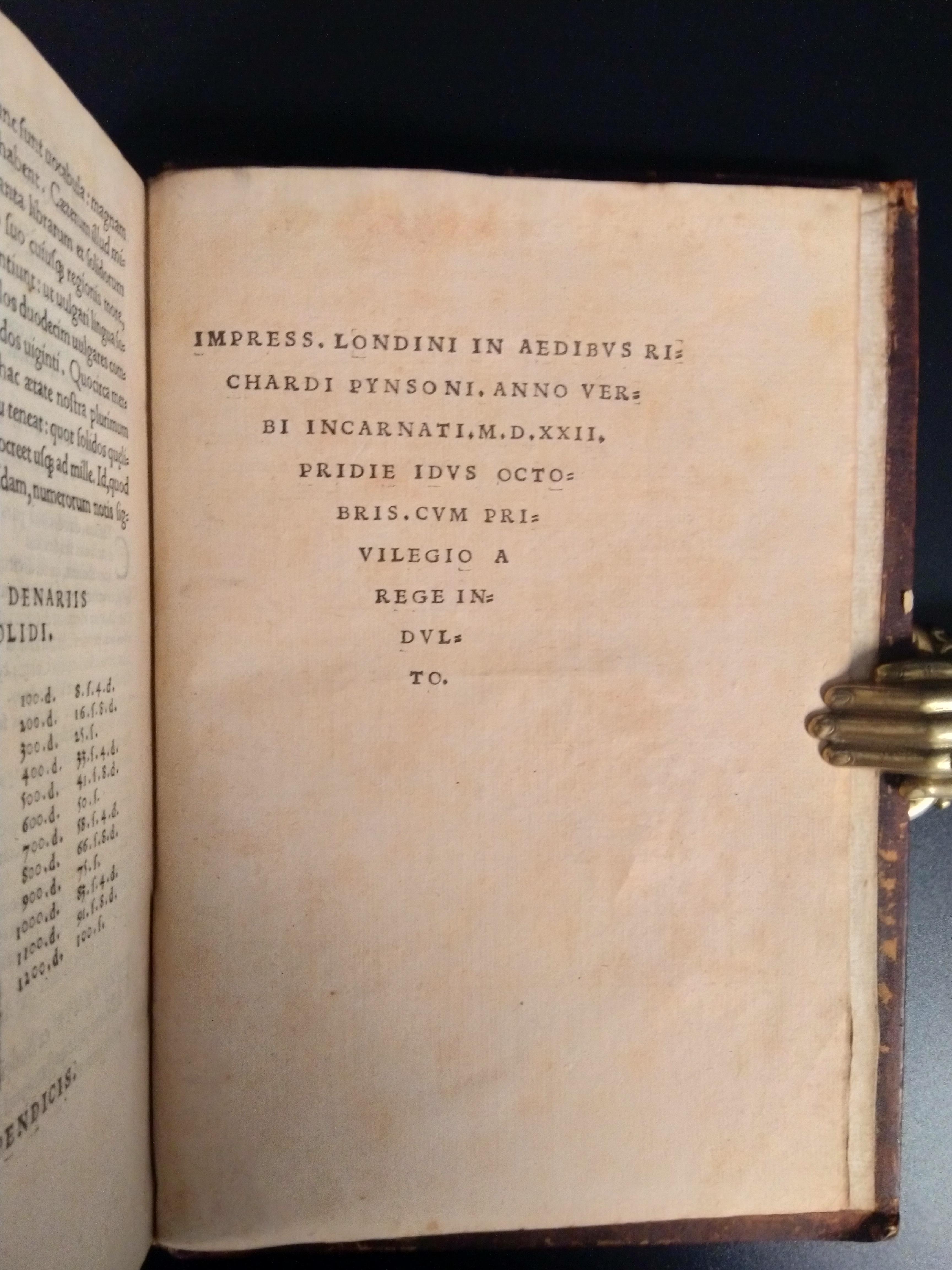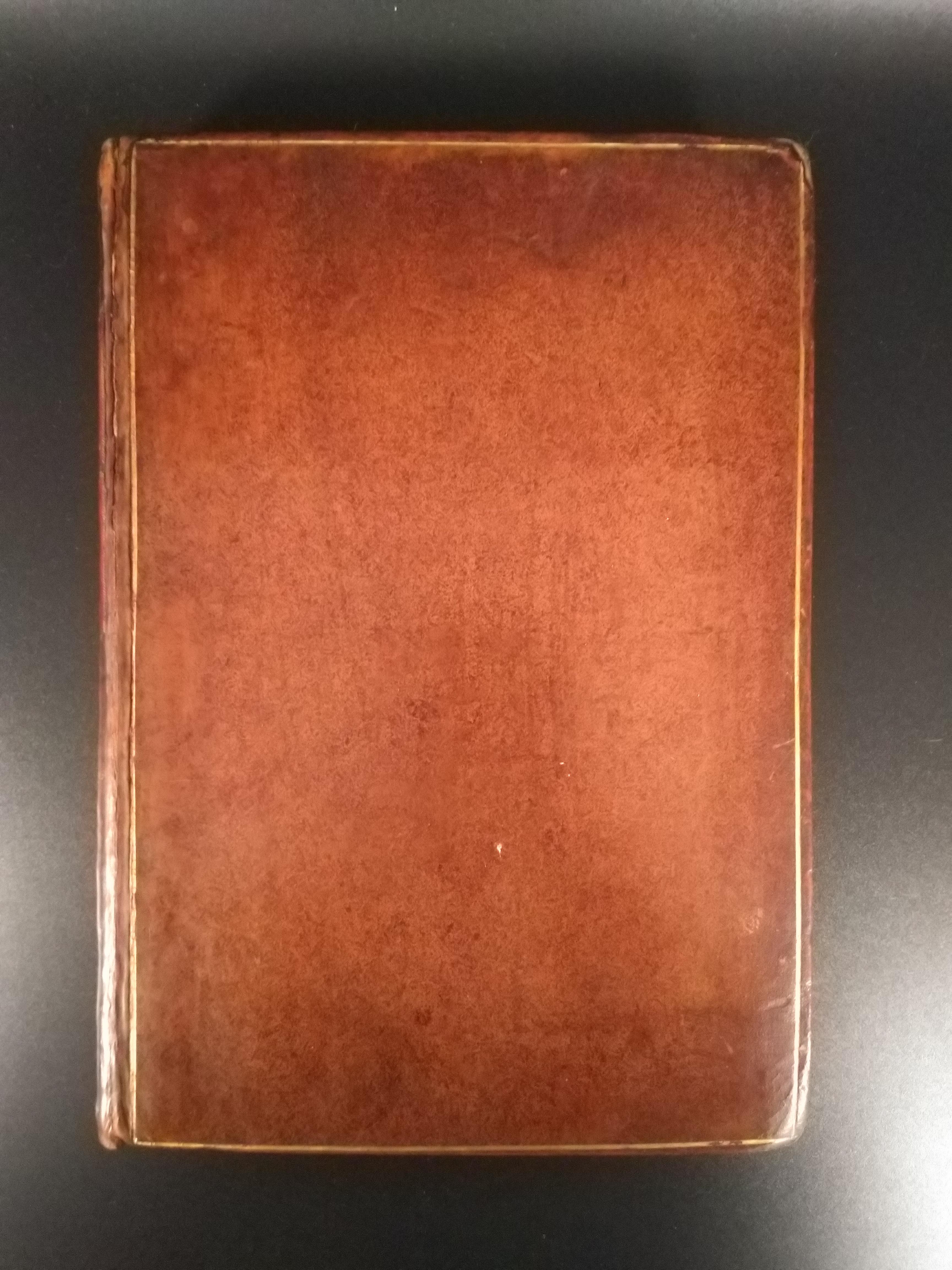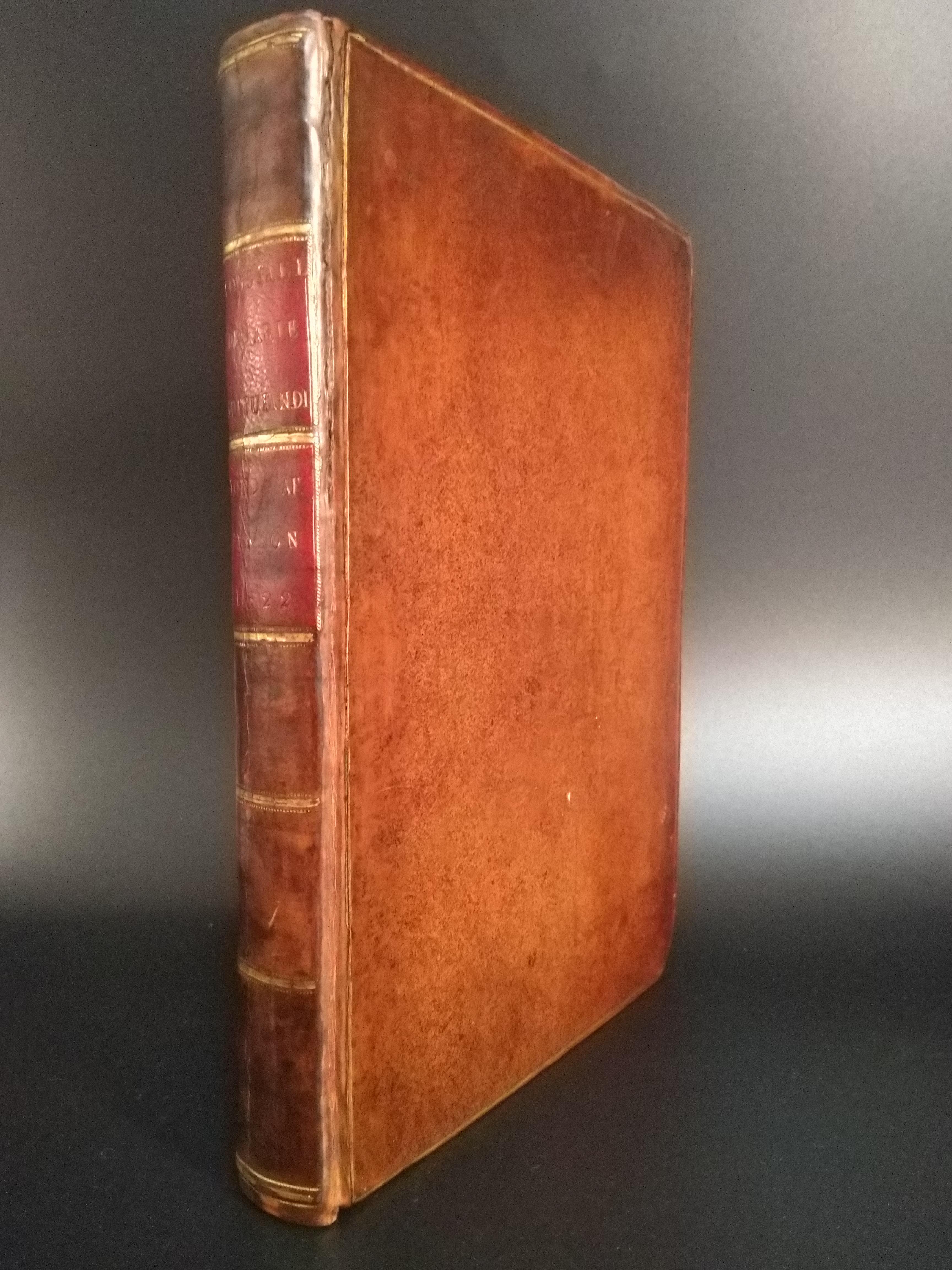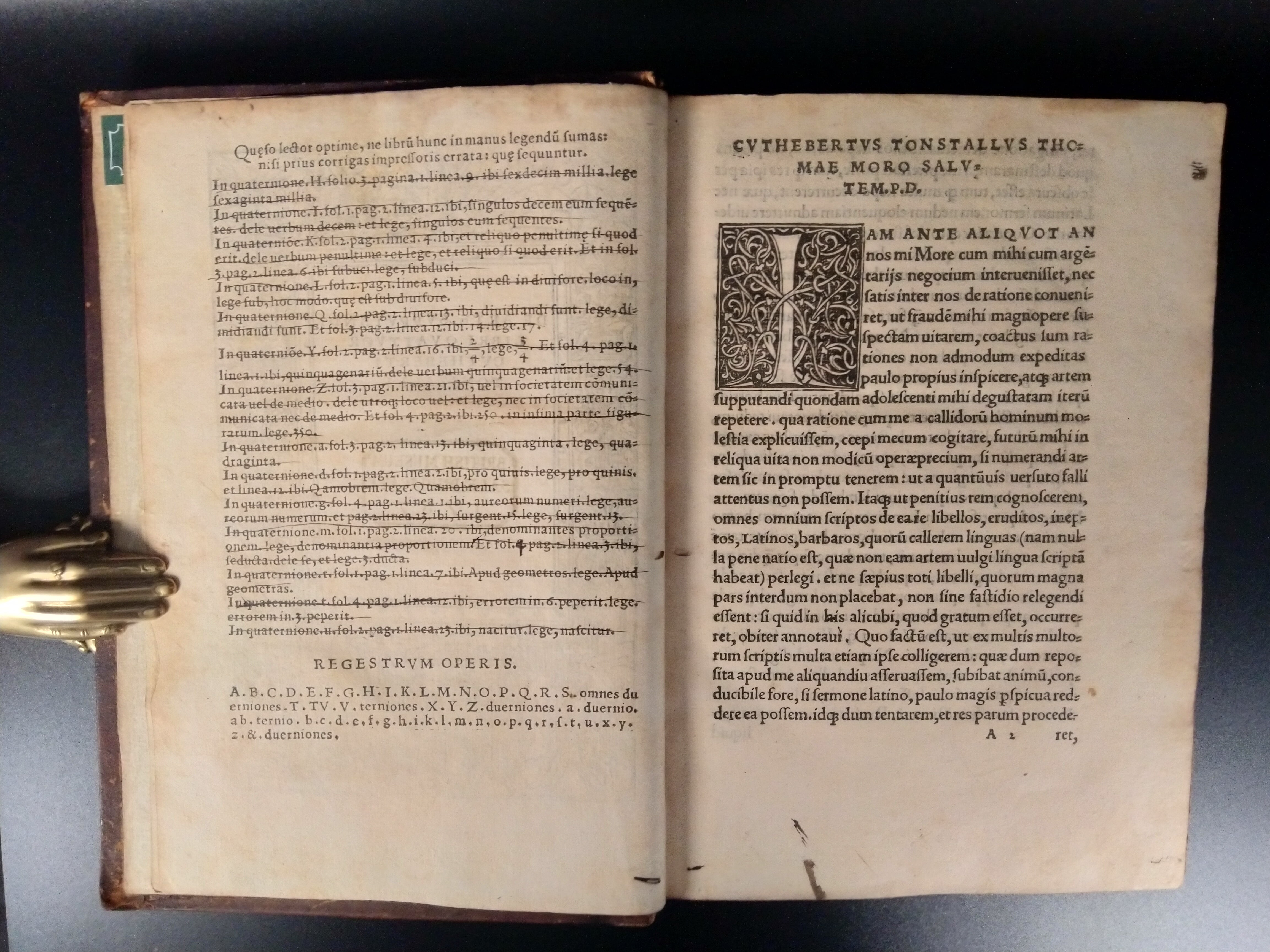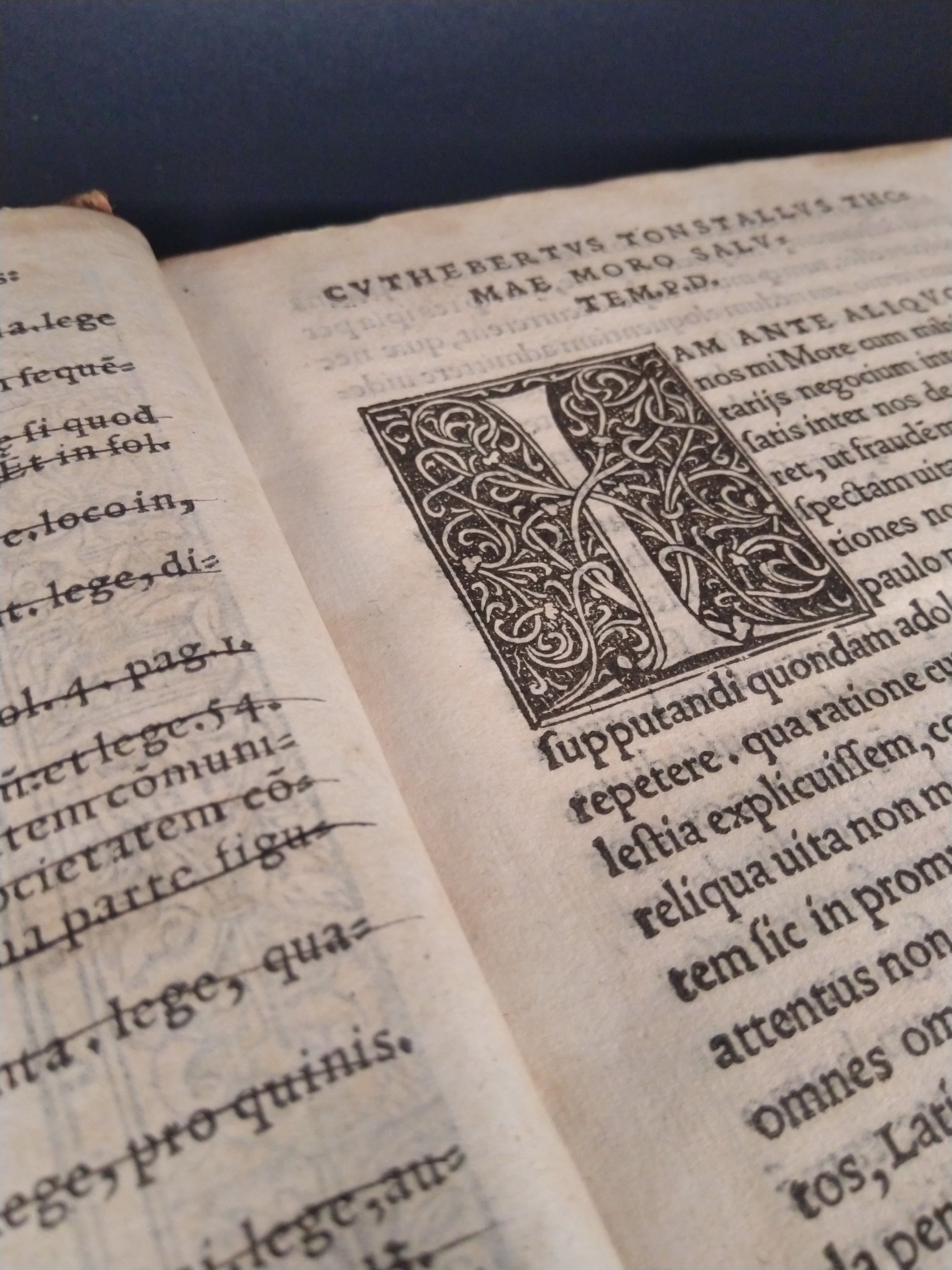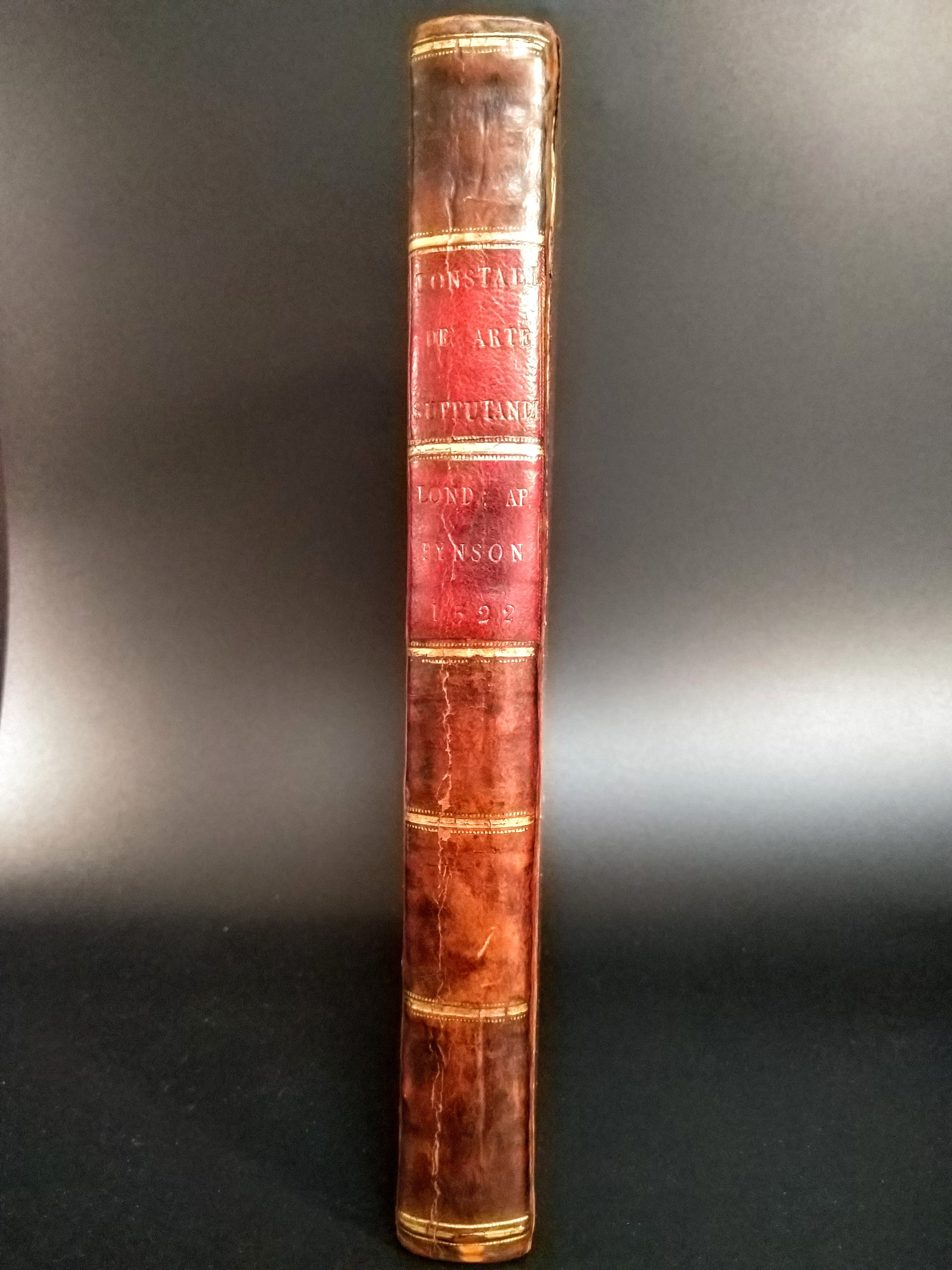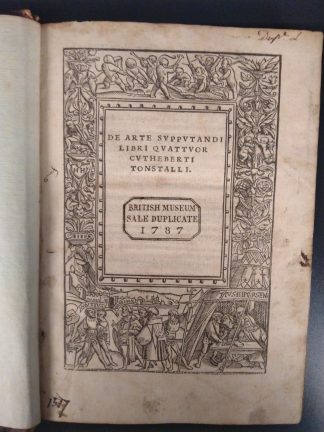TUNSTALL, Cuthbert
BM – WOODHULL – DUNN COPY
De arte supputandi libri quartuor
London, In aedibus Richardi Pynsoni, Anno Verbi incarnati, 14 Oct. 1522£32,500.00
FIRST EDITION. 4to. 204 unnumbered leaves. A-S , T , TV , V , X-Z , a , ab , b-z , & . Roman letter. Title within a fine historiated woodcut border signed HH and copied from Holbein (McKerrow & Ferguson 8), errata on verso, floriated white on black criblé woodcut initials, woodcut mathematical tables, errata crossed out in an early hand with the corresponding corrections added throughout, occasional manuscript underlining. British Museum sale duplicate 1787, stamp on title, manuscript date “June 18th 1813 , on rear flyleaf in Michael Wodhull’s hand (1740-1816), bookplate and label of George Dunn (1865-1912), Woolley Hall, on pastedown, mss. note in pencil in his hand “Wodhull’s copy, see fly leaf at end.” with his distinctive price code and date March 1910, “John Burns, May 23 1918”, mss above, Erwin Tomash label above. Light age yellowing, a few quires lightly browned, some minor marginal spotting, title a little dusty with thumb marks at margin, the occasional mark or ink splash. A very good copy, generally crisp and clean, with good margins, some deckle edges, in late C18th calf, covers bordered with a single gilt rule, spine, rebacked with former spine laid down, gilt ruled in compartments, red morocco labels gilt lettered, a.e.g. corners a little worn, a little rubbed.
First edition of the first English book wholly on arithmetic, by the great Catholic humanist, Cuthbert Tunstall (1474-1559). The work was Tunstall’s farewell to secular scholarship as he was made Bishop of London a few days after its publication, and thereafter Lord Privy Seal. He wrote it so that his friends could make their own calculations and no longer be cheated by money changers. It is designed as a practical work on arithmetic with the emphasis on commercial transactions, undoubtedly based on models Tunstall encountered during his studies in Padua. “The book includes many business applications of the day, such as partnership, profit and loss and exchange. It also includes the rule of false, the rule of three and numerous applications of these and other rules. It is, however, the work of a scholar and a classicist rather than a businessman.” Smith p.134, It is dedicated to his particular friend Thomas More, who, the previous year had been appointed sub-Treasurer of England, because there was no more appropriate dedicatee than the man engaged in supervising the finances of the King This was also the return of the compliment which, six years earlier, More had paid Tunstall in the opening lines of the Utopia. The work was actually rather too scholarly for ordinary businessmen and it was not reprinted in England. However, it achieved some success on the continent and Rabelais (Oeuvres II 222) mentions it as required reading for the young Gargantua in Paris; it was also prescribed as an arithmetical study text in the Oxford statues of 1549, (together with Cardano).“The dedicatory epistle to M[ore], gives an interesting picture of M[ore] and Tunstall” Gibson 157.
“Cuthbert Tunstall began his studies in Oxford but soon moved to Cambridge because of the plague. He later studied Canon and Roman law at Padua. He held several appointments in Henry VIII’s court and was made Bishop of London only a few days after this work was published. This is the first complete work on arithmetic to be published in England. It was preceded only by a chapter in Caxton’s Myrrour of the World, published in 1481. .. In content and structure the work resembles that by Luca Pacioli and other Continental arithmetics, which Tunstall undoubtedly encountered in Padua or during his extensive travels for Henry VIII. An unusual feature in the book is the separate tables for addition and subtraction as well as those usually found for multiplication. .. Robert Recorde’s English language arithmetic appeared fifteen years later in 1537 and seems to have eclipsed Tunstall’s work, at least in England. The title page is a revised version of one by Hans Holbein, whose initials can be seen on the left border. The woodcut was first used by a printer in Basel in 1516.” Erwin Tomash.
Michael Wodhull studied at Winchester school when Joseph Warton was second master; he later attended Brasenose College Oxford. He was high sheriff of Northamptonshire in 1783. Wodhull wrote poetry, collected first editions of classics and incunabula, and contributed many items to the Gentleman’s Magazine under the signature “L. L.” One of his Euripides translations appeared in an Everyman’s Library edition. The character “Orlando” in Thomas Frognall Dibdin’s Bibliomania is supposed to represent Wodhull. Dunn was a bibliophile who amassed a splendid library with particular strengths in early printing, law books and medieval manuscripts. His remarkable collection was sold in a number of sales between 1913 and 1917.
ESTC S118552. STC 24319. Tomash & Williams T57 (this copy) Smith, Rara arithmetica, pp.132-4In stock


